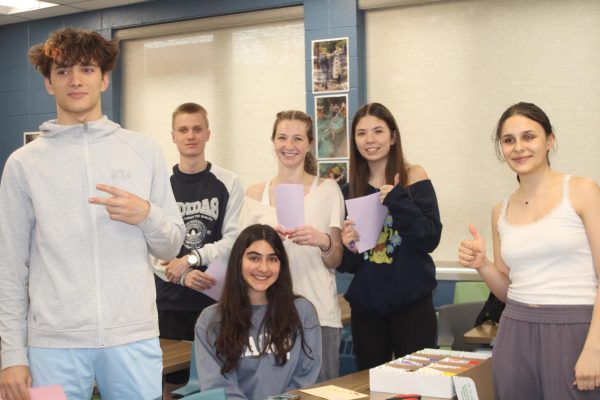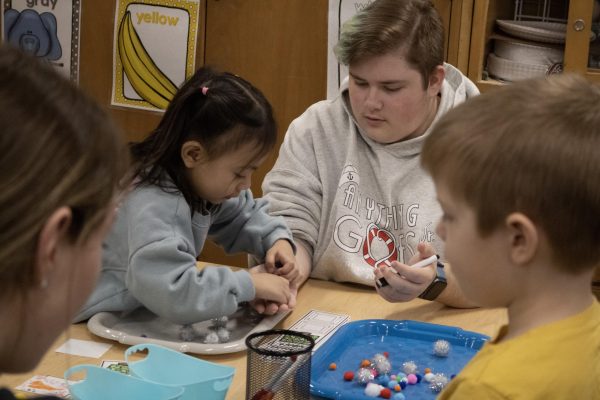English Language Learners Program lifts international students to academic success
April 23, 2021
Communication is vital in the high school environment, whether you need to communicate with teachers, administrators or students. Many students, such as senior Olexandra German, must learn to communicate in a language that is not their own in the English Learners (ELL) program at South.
ELL is a program for students whose native language is not English, Emily Hinz, social studies teacher, said. It teaches students every subject with additional language help for things like vocabulary and language skills, Hinz explained.
“[The ELL program] takes time to teach vocabulary and language skills along with the content,” Hinz said. “Especially for English learners, it’s important to incorporate reading, writing, speaking and listening in everyday lessons.”
The transition into a new school environment can be tough for students in the ELL program who don’t know where to go or what to say, German said. German was able to rely on her fellow students at South to navigate her new environment.
“It was kind of hard because I knew no one, and I can say that my English was really bad,” German said. “I remember on my first day, I didn’t know where I supposed to go. There was one girl, but I was really afraid of asking her. I had to take out my phone and use Google translator. She was really nice, she grabbed my hand and took me to the main gym.”
Students also gain support from teachers and coordinators in the program, according to sophomore Arich Rajput. Rajput has also gotten help from other older students in the program, she said.
“The subject [material learned in class] is a lot easier because the program [helps us understand it],” Rajput said. “The teachers know that students have more trouble than others in English. The other students help with the vocabulary, making things a lot either so everyone can understand and express themselves.”
Hinz explained that the students in the ELL program must work to manage a new, foreign environment with an unfamiliar culture, language and community. They must navigate a new environment, all while taking challenging courses.
“When you’re learning a language and you’re navigating through a new school system and challenging classes, you have to work really hard,” Hinz said. “There’s a lot of challenges that students face. [The ELL students] are some of the hardest working students in the school.”
The pandemic has affected the lives of all students at South, especially students in the ELL program, according to ELL Coordinator Mina Moon. Only 20 percent of students in the ELL program have returned to school for in-person learning, she said.
“Quite a significant number of our students are learning from home, but they’re slowly starting to come back into the building.” Moon said. “We worry about the isolation they might feel being at home learning, as well as experiencing this pandemic.”
Learning at home during the pandemic has been a difficult transition, Rajput said. She found it difficult to learn new material over Zoom, especially while she was still learning to communicate in English.
“[Virtual learning] was kind of hard in the beginning to get used to and my English was not that good,” Rajput said. “It was hard to be home to learn everything.”
Teachers and coordinators from the ELL program worked to deliver resources to help ELL students and their families during the pandemic, Moon said. ELL teachers are tasked with verifying that students and their families in the program understand procedures within the district and allocating resources when needed. Moon explained that teachers have used many different approaches to communicate with students and their families to ensure families have the information they need.
“They have offered different websites [for us to access],” German said. “Now, they offer Zoom meetings one on one if you have any problems or need to get your grades up.”
Teachers and coordinators in the ELL program all agree that their students have a lot of perseverance and resilience, Hinz said. Students in the ELL program face many challenges such as the language barrier, Covid and adjusting to the culture, she explained.
“There is so much opportunity to learn from the students who speak a second language,” Hinz said. “I want to see GBS students reaching out to people who have different experiences. This group of students are really interesting; the relationships you can build with anyone at school is valuable to opening your minds to.”














